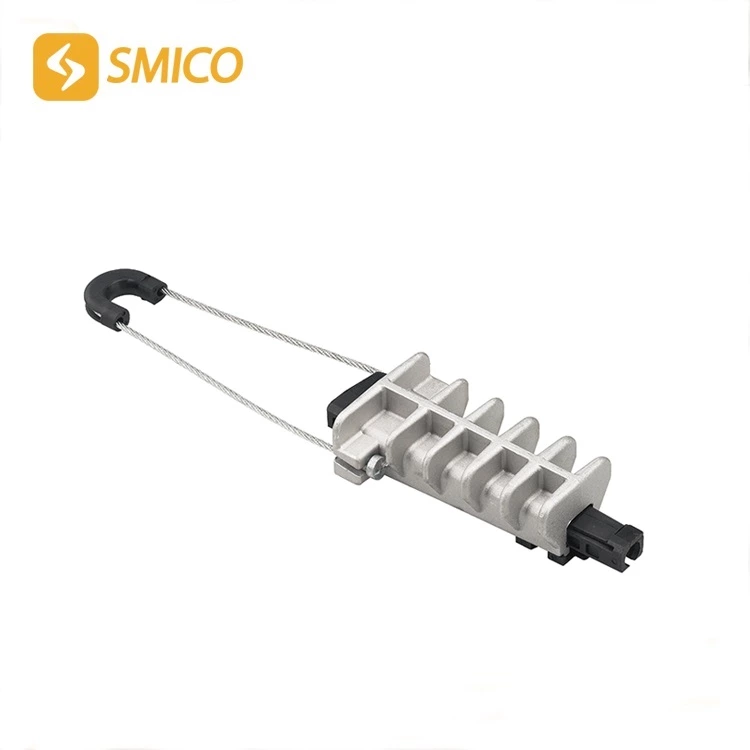Function And Influence Of Wedge-type Tension Clamp
Power fittings*** are various metal accessories for constructing power transmission systems. Power fittings are iron or aluminum metal accessories widely used in power transmission lines, collectively referred to as fittings. According to their functions and structures, they can be divided into categories such as suspension clamps, dead end clamp overhead line, UT clamps, connection fittings, splicing fittings, protective fittings, equipment clamps, T-type clamps, busbar fittings, and wire fittings; according to their uses, they can be used as line fittings and transformer fittings.
dead end clamp with eye hook Functions
dead end loop clamp Fittings used to fix conductors to withstand conductor tension and hang conductors on tension strings or towers. It is used to fix conductors or lightning conductors on tension insulator strings of non-linear towers, which plays an anchoring role. It is also used to fix the wires of the wire towers, and is used for corners, splicing, and terminal connections. Spiral aluminum-clad steel wire has extremely strong tensile strength and no concentrated stress, which protects and assists in vibration reduction for optical cables.
Classification of dead end tension clamp
fiber optic dead end clamp According to the different structures and installation conditions, it can be roughly divided into two categories.
First category: fixed dead end clamp To withstand the full tensile force of the conductor or lightning conductor, the clamp gripping force is not less than 90% of the rated tensile force of the installed conductor or lightning conductor, but it does not act as a conductor. This type of clamp can be removed after the conductor is installed and used separately. This type of clamp includes bolt-type tension clamps and wedge-type tension clamps.
Second category: In addition to bearing the full tensile force of the conductor or lightning conductor, the tension clamp also acts as a conductor. Therefore, once this type of clamp is installed, it can never be disassembled again, and it is also called a dead wire clamp. Because it is a conductor, the installation of the clamp must comply with the provisions of the relevant installation and operation procedures and be carried out carefully.
Most hardware needs to withstand large tensile forces during operation, and some must also ensure good electrical contact at the same time. It is related to the safety of the conductor or tower. Even if one is damaged, it may cause a line failure. Therefore, the quality, correct use and installation of hardware have a certain impact on the safe power transmission of the transmission line.

